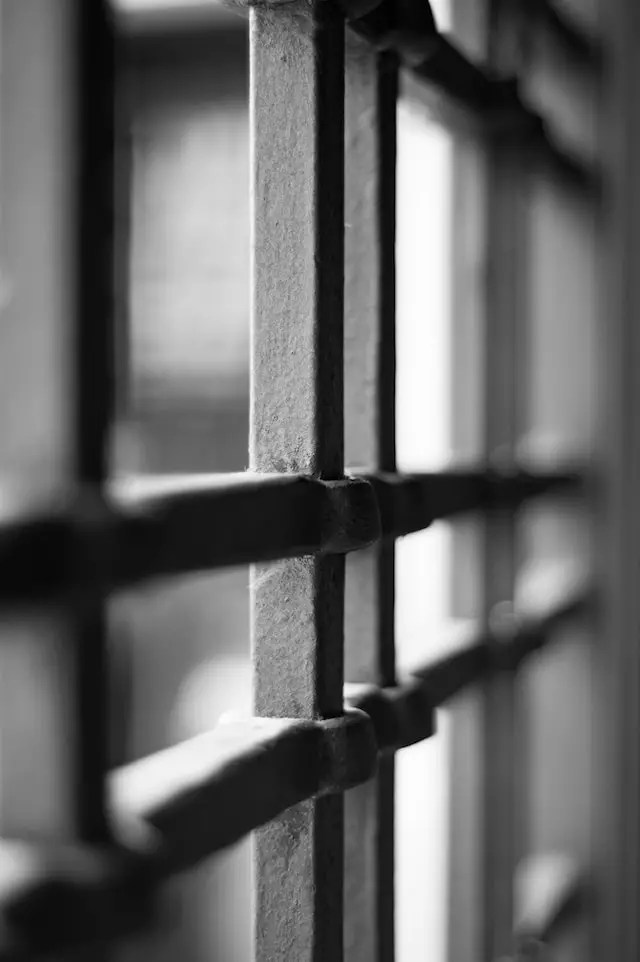Are you looking to better understand the difference between state and federal prisons? It can be difficult trying to decipher the two since they look so similar from an outsider’s perspective. However, when it comes down to it, there are some key differences between them that set them apart and require a much deeper understanding in order to comprehend what sort of housing environment inmates will endure within each.
This blog post aims to explore those features that differentiate one prison system from another using case studies from recent history as reference material. We hope this helps give readers more clarity on how these seemingly identical systems differ and operate differently when observed up close.
State and federal prisons in the US criminal justice system
In the US criminal justice system, there are distinct differences between state and federal prisons. While both systems house inmates who have been sentenced to serve time for a crime, federal prisons differ from state prisons in several ways. Firstly, federal prisons are run by the government, like at Yazoo City USP, while state prisons are funded by the state. Secondly, federal prisons house inmates who have been convicted of federal crimes, such as drug trafficking, tax evasion, and kidnapping.
State prisons, on the other hand, house inmates who have been convicted of state crimes, such as murder, theft, and assault. Federal prisons also tend to have a higher security level than state prisons and may house more dangerous criminals. Understanding these key differences is important in comprehending the overall landscape of the US criminal justice system.
Differences in structure, security levels, and amenities available
One noticeable difference between state and federal prisons is the structure of the facilities. Federal prisons, as they are operated by the government, tend to be larger and more structured than state prisons which may have a varying degree of organization depending on funding and resources available. Federal prisons also tend to have more security measures in place, including higher levels of armed guards, surveillance cameras, and restricted inmate movement. This is due to the fact that federal prisons house inmates who have been convicted of serious crimes and may pose a higher risk to society.
Furthermore, federal prisons also offer a wider range of amenities and programs for inmates, such as vocational training, educational opportunities, and rehabilitation programs. These resources aim to help inmates successfully reintegrate into society upon their release. On the other hand, state prisons may have more limited resources and programs available due to budget constraints. This can greatly impact an inmate’s ability to rehabilitate and prepare for life outside of prison.
Types of inmates held in state and federal prisons
As mentioned earlier, federal prisons typically house inmates who have been convicted of federal crimes, while state prisons hold those who have committed state-level offenses. However, it is important to note that the majority of prisoners in the US are held in state prisons, with only a small percentage serving time in federal prisons. In general, state prisons tend to hold more diverse populations, including a mix of violent and non-violent offenders.
Moreover, federal prisons house more white-collar criminals, who are often involved in financial crimes or other forms of fraud. This is due to the fact that these types of offenses are typically prosecuted at the federal level. State prisons, on the other hand, may have a higher percentage of inmates from lower-income backgrounds and with a history of substance abuse and mental health issues.
How sentencing guidelines differ
When it comes to criminal sentencing, the guidelines differ greatly between the state and federal levels. While both aim to administer justice, the factors taken into consideration can vary significantly depending on the jurisdiction. Understanding these differences is important for legal practitioners, defendants, and the general public alike.
Unlike in federal court, where there are uniform guidelines, states have a lot more discretion in sentencing and can consider a wider range of factors such as criminal history, socio-economic background, and the severity of the crime, just to mention a few. Ultimately, comprehending these guidelines ensures that defendants receive a fair and just sentence and that the criminal justice system operates in a transparent and equitable manner.
Jury selection processes at state and federal level
The selection of a jury is an important process in any court case. Both at the state and federal level, jury selection is a complex process with multiple steps. The process aims to ensure that the jury is fair and impartial and that the jurors are able to make an independent decision based solely on the evidence presented in court.
At the state level, each state has its own set of rules and procedures that govern jury selection. Similarly, at the federal level, the federal rules of criminal and civil procedure specify the process of jury selection. Overall, the jury selection process is designed to promote transparency, fairness, and impartiality to ensure a fair trial for all parties involved.
The impact of Supreme Court decisions on local, state, and federal laws
The US Supreme Court plays a crucial role in shaping the criminal justice system at both the state and federal levels. Its decisions can greatly impact laws and regulations, setting legal precedents that must be followed by lower courts.
Some notable cases that have had a significant impact on state and federal prisons include Estelle v. Gamble, which determined that inmates are entitled to receive adequate medical care while incarcerated, and Turner v. Safley, which ruled that inmates have a constitutional right to marry while in prison. These decisions showcase the power of the Supreme Court in shaping the treatment of inmates and their rights within the prison system.

The differences between state and federal prisons extend beyond the basic distinction of the crimes for which inmates are convicted. Factors such as the structure of the prisons, security levels, amenities available, sentencing guidelines, the types of inmates, and even the process of jury selection, all vary significantly between state and federal systems.
Furthermore, decisions made by the Supreme Court continue to shape the landscape of the criminal justice system on all levels — local, state, and federal. A thorough understanding of these differences is crucial for anyone involved or interested in the US criminal justice system, from legal practitioners and defendants to ordinary citizens seeking a deeper understanding of how our society handles crime and punishment.












